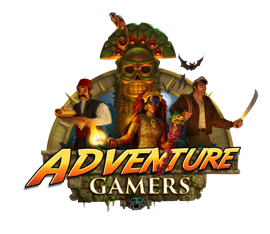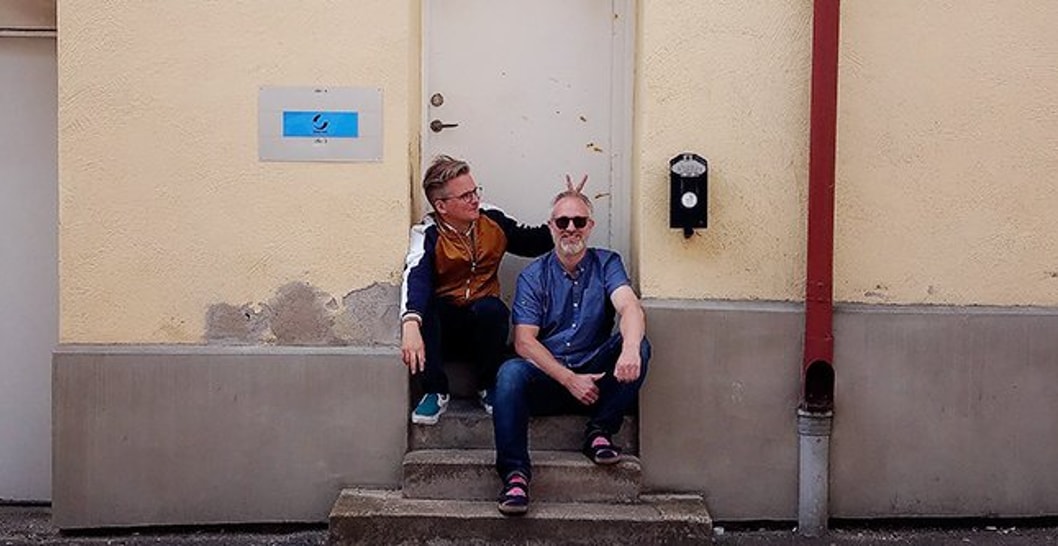Growing Up With Simogo
I tend to use gaming consoles to remember specific eras of my childhood. Growing up in a house where gaming was a hobby meant that the first controller I ever held before I gained full sentience belonged to a Nintendo 64. I may not remember the first house I lived in, but I remember that appalling controller, with its central joystick and third handle, making the device look like a graphical glitch. But all of these consoles were in the living room and, more often than not, monopolized by my older brother. As a result, I spent much of my developmental life watching games rather than playing them. It became a social interaction between me and my brother. These gaming sessions felt like nonlinear movies where I could “influence” the director with my commentary and suggestions. There was drama in watching him succeed or fail at combat, puzzles, and exploration.
But all of this changed when I was 9. I received my first iPod Touch for Christmas. It was a small, portable multimedia device that I could carry with me everywhere, and this acted as a portal to a whole new world of gaming and experiences. You see, there was a golden age of the Apple App Store that boomed from 2009-2014, and its radiance saw the birth of influential artistic achievements that gave me great optimism for the future of mobile gaming. It was on various iOS devices that I discovered titles like Superbrothers: Sword and Sworcery, The Infinity Blade Trilogy, Badland, Canabalt and World of Goo. The iPod Touch and the iPad Mini felt like my first “gaming console”. It was curated and personalized. I could access it wherever and whenever, and exploring the various games and watching how they evolved became a passionate hobby of mine. I would save Apple gift cards from holidays and pick up games on my wishlist. I’d research gameplay videos and watch reviews on YouTube to stay in the loop. I loved the discoveries that I made over the years, but nothing, absolutely nothing, can compare to the impact that Simogo has had on my life.

Simogo, or as I knew them back in the ye olde days, Simogo AB, is a Swedish-based studio founded by Simon Flesser and Magnus "Gordon" Gardebäck (get it? Simon/Gordon, Sim/o/go, clever name!). What started as a small team making cute platformers for iPhone with charming soundtracks and cozy vibes, such as Kosmo Spin in 2010, Bumpy Road in 2011, and Beat Sneak Bandit in 2012, would continue to snowball and innovate, leading to them developing some of the most extraordinary and most memorable games I have ever had the pleasure of experiencing. Something they continue to do to this very day.
In 2013, Simogo released Year Walk, a first-person, 2D side-scrolling horror game with visuals like a children’s book and a world ripped straight from my nightmares. I had seen screenshots, short gameplay trailers, and the visuals piqued my interest, but I had no idea what I was signing up for when I picked it up on a whim. Year Walk is a puzzle game. There is no failure state, just the halting of progress until you can figure out how to progress further, and yet, despite the game’s objective safety, Year Walk unnerved me in ways I had never before experienced and continues to frighten me in every replay. My impressionable brain wasn’t prepared for Year Walk’s gentle existential horror. The game nails the dream logic terror of pushing deeper and deeper into the unknown; every step through its dark winter forest means you are one step further from the world you once knew.
You play as a silent protagonist, who you later learn in the game’s meta endgame (more on that later) is named Daniel Svensson, who has decided to undertake the ritual, Year Walk, or årsgång. This is based on Swedish folklore where if one were to seclude oneself on an important day in the dead of winter, either Christmas or the New Year, and not partake in food or drink, the year walker would be enticed to make a pilgrimage through the forest where they would be challenged by spirits and strange creatures in the hopes of catching a glimpse of the future. Daniel wishes to know what awaits him and whether or not the girl he loves will accept him or the proposal of another suitor. In Year Walk, the player traverses through the landscape, navigating environmental puzzles and completing tasks for increasingly sinister monsters, all to reach the church and be granted a vision of the things to come. Year Walk is deceptively horrifying. It relies on sound design, Daniel Olsén’s haunting soundtrack, and using information as a weapon against the player.

Year Walk was a revolutionary iOS game because of the way it embraced its medium. The game was divided into two separate applications, the base game and a free codex app called “Year Walk Companion,” where the player was invited to read about the Year Walk itself and gather information on the mythic creatures they encountered. In this text, you would be warned of potential dangers. You’d read of the Brook Horse dragging children down the bottom of the lake or the Huldra luring men into the woods to slaughter them, and you’d deal with this dissonance in-game as these figures seemingly guide you closer and closer to your goals. All this tension is building in these silent woods, and Huldra’s puzzle features the most effective, well-earned, and paralyzing jumpscare I’ve ever faced. It stopped my heart in 2013 and solidified the message that these beings are not your friends, and you are a trespasser in these woods.
This companion app elevates Year Walk to new heights, as you are encouraged to explore and piece together how these two applications interact to achieve the game’s true ending, and unraveling this puzzle box remains the most memorable gaming experience of my life. At 13 years old, I had a notebook filled with runes and glyphs, solutions to puzzles penciled in the margins, and reaching the end of Year Walk merely revealed that the end was not the end. The companion app features a multimedia metanarrative about time loops and cosmic horror that’s all so intriguing and well-written that I genuinely believed this was real and had stumbled upon something hidden and forbidden. I didn’t know games were capable of this and had no one else to talk to about it, so it seeped into my dreams and waking mind simultaneously, and all I wanted to do was experience that walk again and again and again.
Simogo unlocked something in my mind, and this flame was kept alive with every subsequent release over the next ten years. At the end of 2013, they released Device 6, an interactive novel puzzle game that would be awarded as IGN’s 2013 mobile game of the year. Device 6 is styled after classic detective books, leans into '60s era psychedelia, and, like Year Walk, is brilliant. You play as Anna, an amnesiac who awakens in a deserted castle on an island, subjected to tests and puzzles in the hopes of escaping and piecing together what is going on. In Device 6, text is your map, it is the scenery, it is the very walls of the castle, and Simogo cleverly plays with the iPhone’s layout and screen orientation, requiring you to swipe and rotate your device to navigate the halls and engage with pictures and contextual button prompts to solve genuinely complex puzzles. I loved Device 6 because each chapter requires you to engage with the text in multiple ways. First, you will navigate and read each chapter like the strangest Kindle book ever written. Here is where you consume the story and engage with the game’s world, and very soon, you will hit a barrier requiring you to go back and decipher riddles and interact with prompts you initially didn’t pick up on.

Now, you are engaging with Device 6 as a video game, requiring you to manipulate text and interact with pictures and, just like Year Walk, you had better keep a notebook handy because Device 6 will not hold your hand. One of the things I love so much about Simogo is their minimalism. Their games do not feature tutorials and will not tell you button prompts because their philosophy is rooted in “design by subtraction.” Their games do not ask that you learn button combinations; with a touch screen, you only swipe and tap what you wish to access. They expect that once you open their games, you will naturally touch the screen or interact with your controller after a moment, and because their control schemes are so simplistic, you’ll understand what is expected of you within a minute.
Simogo’s elegance is in its content, which is rich and deep without demanding that you use every button laid out before you. They know how to work within the limitations of the iPhone and iPad, and in their follow-up game, The Sailor’s Dream, they experimented with the phone’s abilities in nuanced ways. I played The Sailor’s Dream (originally released in 2014) a few years later, as I began to ditch my reliance on Apple devices for that shiny new PlayStation 4. Rowing my way through The Sailor’s Dream was an excellent return to form that fully embraces its walking simulator influences. The Sailor’s Dream is an interactive album with visual novel elements. Using the same control scheme and first-person 2D perspective as Year Walk, you sail between islands, visit forgotten places, and listen to Jonathan Eng and Stephanie Hladowski’s beautiful music. The narrative is the goal here, and I was very fond of how Simogo integrated the iOS features to tell its story. Songs in a bottle would wash up on the shore every day of the week, and lost transmissions would hum through a radio on one of the islands at the top of every hour. You could print sketchbook drawings of one of the characters, which presents a non-linear narrative about loss, regret, and mental health that’s equally endearing and tragic. The Sailor’s Dream remains an anchor for me. Something that I return to every few years or so to explore its soundscape and wonderful visuals. Thematically, it’s inspired many of my short stories, and the game setting remains an all-time favorite. The whimsical nautical world of old sailing ships and lighthouses will always appeal to me on a spiritual level.

Two years ago, I finally played Sayonara Wild Hearts, a rhythm action game released for consoles, PC, and Apple Arcade in 2019. As an adult in my mid-20s, seeing the Simogo logo flash across my television made my eyes dilate, filling me with the same nostalgic excitement as watching that Pixar lamp absolutely decimate that letter “I.” Sayonara Wild Hearts is a colorful arcade game about high scores, saving the universe, and overcoming heartbreak as a pulse-pounding pop soundtrack syncs with the action on-screen. You play as “The Fool,” a woman down on her luck, who has been chosen by a cosmic deity to counter a destructive invading force. You’re given the power of tarot cards and a magic motorcycle to duel villains that visually represent different dysfunctional relationships. The game is short, sweet, and full of personality. It’s easily the most replayable of all their games. It encourages you to go for high scores, to get a perfect rank, and has an interesting challenge mode, where the game’s achievements are locked behind riddles that require you to play through a level with a hyper-specific goal in mind. Seeing this feature had me pointing at the screen like DiCaprio in Once Upon a Time in Hollywood because it was just so Simogo. Who else can I turn to when I want a game to think outside the box and ask that I engage with it in unconventional ways?
Sayonara Wild Hearts feels like the most “video gamey” game in their series, and I love it for that. It’s become a comfort experience, something I’ll play when I want to zone out and exist in a colorful suspension chamber for a little while. But as with everything else they’ve developed, my relationship with this game continues to evolve. At the time of writing, Simogo and Annapurna Interactive have just released Lorelei and the Laser Eyes, for PC and Nintendo Switch on May 16, 2024. It's an adventure game with Silent Hill's fixed camera perspective, where the player is tasked with solving environmental puzzles and navigating an otherworldly hotel. I picked up a copy immediately on Steam but haven’t started it yet. I’m waiting to play it when I can fully give myself over to it and not be distracted by class or work.

In preparation for this article, I replayed Year Walk in its entirety, and I am currently puzzling through Device 6. I returned to the islands of The Sailor’s Dream and gold-ranked every level again in Sayonara Wild Hearts. Revisiting these pillars of my childhood brought to life a realization. It’s not just that I grew up with Simogo’s games that makes me feel tethered to them, but how they connect to my fears and desires. Art is an expression of our innermost self, and the art we associate with it reflects this. It’s not just that Simogo has designed brilliant puzzles and crafted innovative gameplay but that their stories, worlds, and characters all speak to me in ways that, at the time, I wasn’t prepared for.
Year Walk taps into a primal fear I’ve carried most of my life. I am riddled with anxiety about an uncertain future, and I am terrified of entrenching myself in a path that will lead to ruin or tragedy. I, too, wonder what the years ahead will bring me, and I feel powerless to change the inevitable passage of time. The Sailor’s Dream brought tears to my eyes as I listened to lost transmissions of an old man who can’t even trust his memories as he muses on regret and loss. I thought Sayonara Wild Hearts was a great fun experience, and it still is! But it wasn’t until I experienced loss and devastating heartbreak of my own that watching The Fool make peace and embrace characters she once viewed as villainous stirred something inside me.
This is the power that Simogo exemplifies. Just like that wooden box in Year Walk's snowy forest, their games connect two points in time. The person I was when I first took that perilous walk through the woods was ready to be wowed by the adventure but wasn’t susceptible to the message and themes. It wasn’t until I lived a little longer and experienced the triumphs and hurdles of growing up that I was ready to be hit by the impact that these games intended.

That’s what excites me about Simogo releasing Lorelei and the Laser Eyes. Given their track record, I’m eager to invite this game into my life and will treasure every moment during this playthrough. By watching the trailer and looking at screenshots, it seems Lorelei is taking a page out of Device 6’s book, and I am here for it. So, thank you, Simogo. Thank you for producing these artistic works over the past decade. Thank you for shaping me into the artist that I am today. Thank you for the glimpses into your worlds and for introducing me to the characters I hold dear to my heart. You remain one of the finest studios in the industry, and I wish you the best of success, something that everyone on the team more than deserves.

















